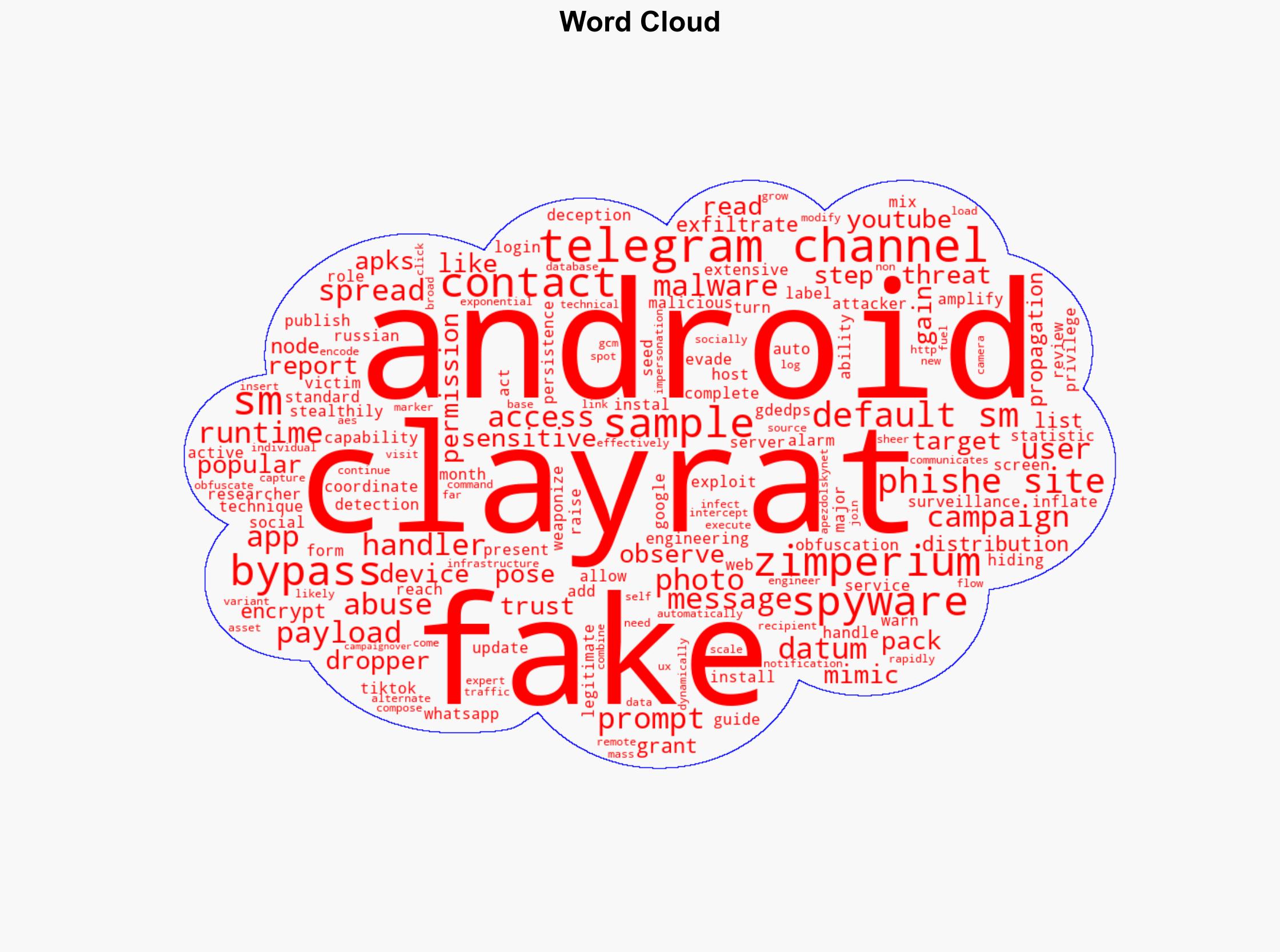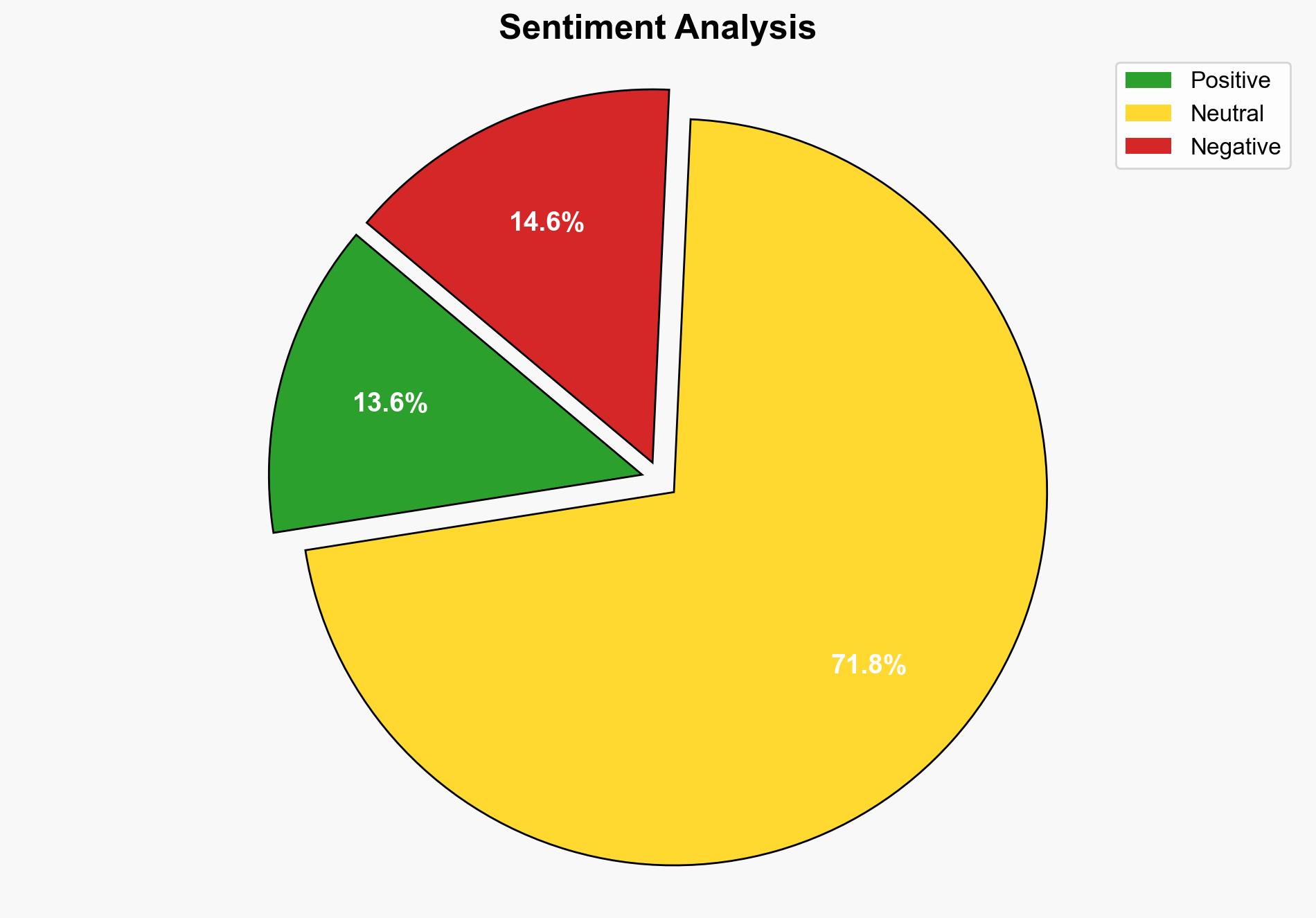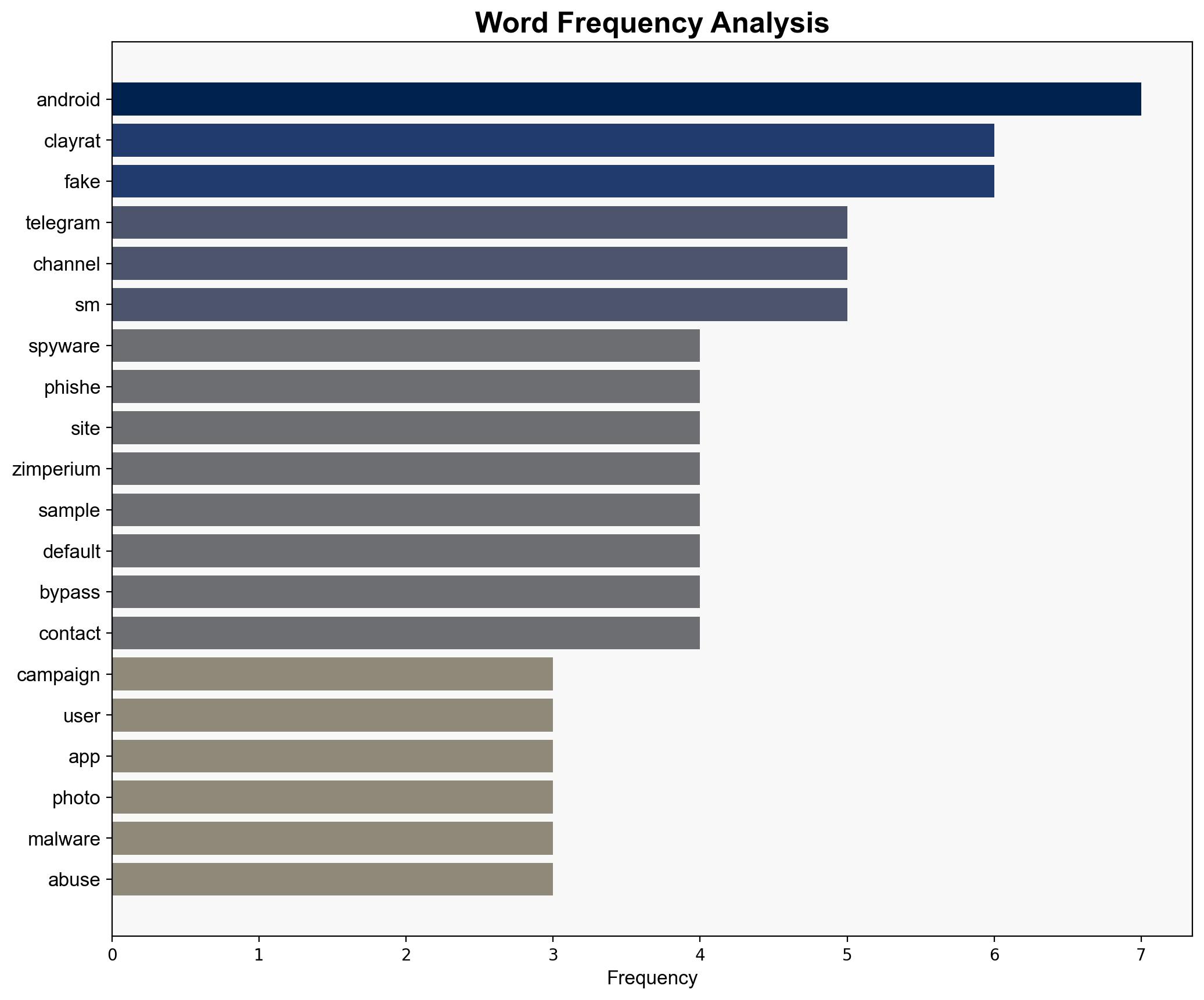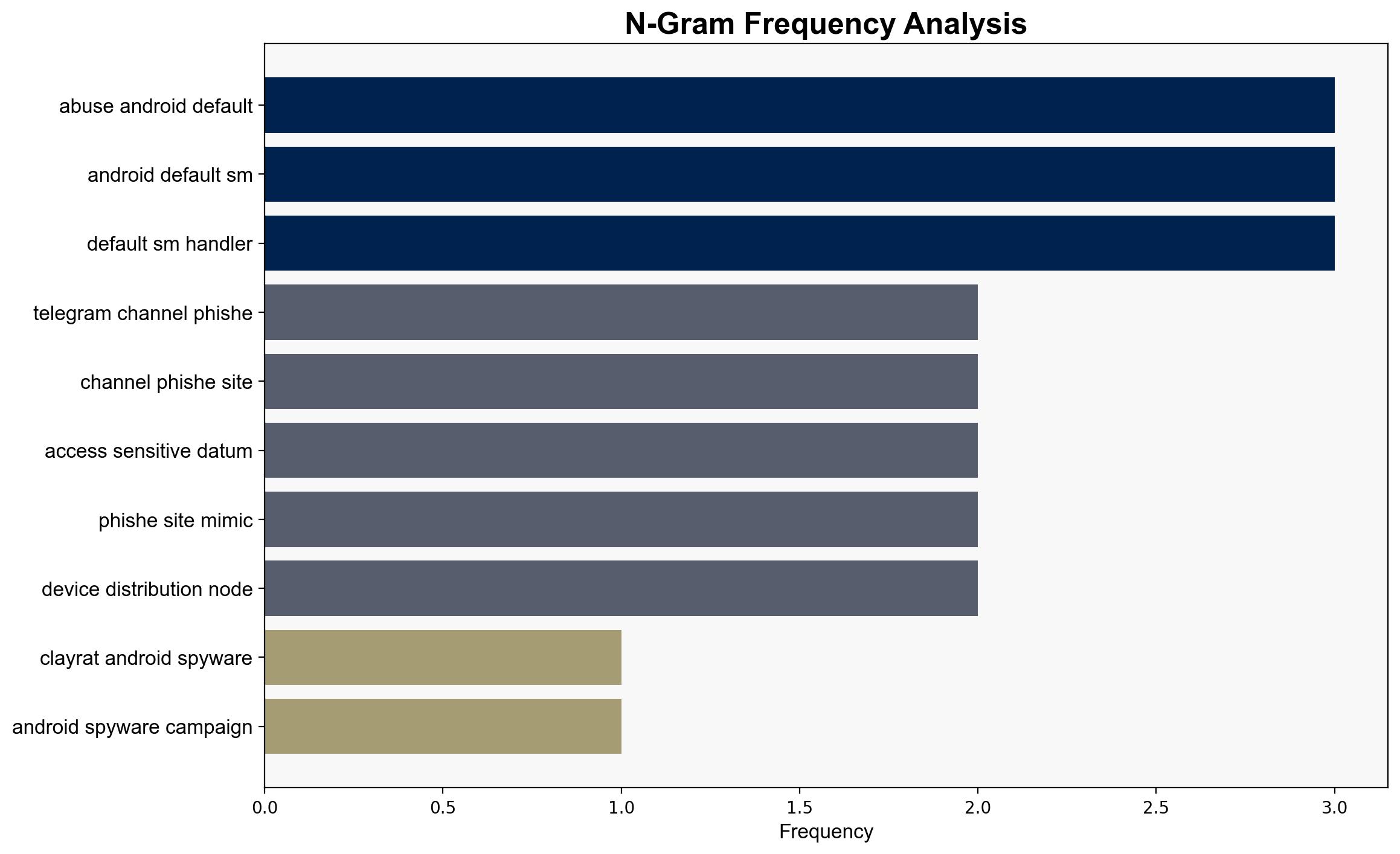ClayRat campaign uses Telegram and phishing sites to distribute Android spyware – Securityaffairs.com
Published on: 2025-10-09
Intelligence Report: ClayRat campaign uses Telegram and phishing sites to distribute Android spyware – Securityaffairs.com
1. BLUF (Bottom Line Up Front)
The ClayRat campaign represents a significant cybersecurity threat, leveraging social engineering and technical exploitation to distribute Android spyware. The most supported hypothesis suggests a coordinated effort to exploit non-technical users through fake Telegram channels and phishing sites. Confidence level: Moderate. Recommended action: Enhance public awareness campaigns and strengthen detection mechanisms for Android devices.
2. Competing Hypotheses
1. **Hypothesis A**: The ClayRat campaign is primarily a financially motivated operation targeting Russian users through sophisticated social engineering and technical exploits to maximize infection rates and data theft.
2. **Hypothesis B**: The campaign is a state-sponsored effort aimed at gathering intelligence on Russian citizens, using the guise of popular apps to infiltrate personal devices and collect sensitive data.
Using the Analysis of Competing Hypotheses (ACH) 2.0, Hypothesis A is better supported due to the campaign’s broad targeting strategy and use of financial-like tactics such as phishing and fake app distribution, which are common in financially motivated cybercrime.
3. Key Assumptions and Red Flags
– **Assumptions**:
– The attackers have the technical capability to maintain and update the spyware.
– Users are likely to trust and download apps from Telegram channels and phishing sites.
– **Red Flags**:
– Lack of direct evidence linking the campaign to a specific group or state.
– Potential underestimation of the campaign’s reach and sophistication.
– Missing data on the exact number of affected users and the financial impact.
4. Implications and Strategic Risks
The campaign highlights vulnerabilities in Android’s permission handling and the effectiveness of social engineering. If left unchecked, this could lead to widespread data breaches and erosion of trust in digital communications platforms. The economic impact includes potential financial fraud and increased cybersecurity costs for mitigation. Geopolitically, if state-sponsored, it could escalate tensions between involved nations.
5. Recommendations and Outlook
- Implement public awareness campaigns to educate users on recognizing phishing attempts and fake apps.
- Encourage Android developers to enhance security measures, particularly around permission handling.
- Scenario Projections:
- Best Case: Rapid detection and mitigation reduce the campaign’s impact, leading to improved security protocols.
- Worst Case: The campaign evolves, targeting more regions and exploiting additional vulnerabilities, leading to significant data breaches.
- Most Likely: Continued but contained spread, prompting incremental improvements in user awareness and device security.
6. Key Individuals and Entities
– Zimperium (research entity observing the campaign)
7. Thematic Tags
national security threats, cybersecurity, counter-terrorism, regional focus




